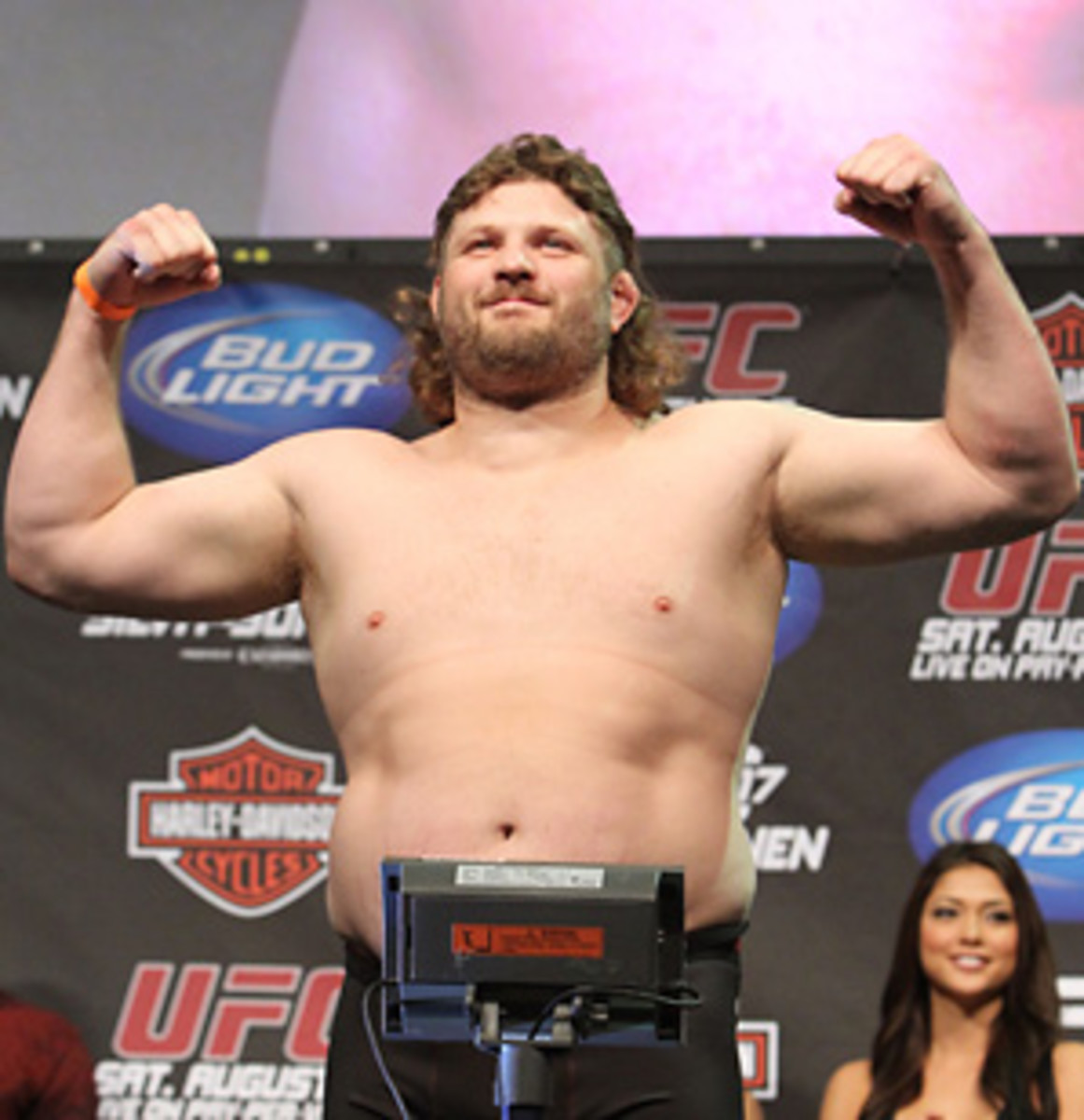
The MMA heavyweights of today come in all shapes and sizes
If you want to know what the modern MMA heavyweight looks like, don't pay too much attention to what you see at UFC 130 this weekend.
Or do pay attention, but be ready to disregard what you've learned at a moment's notice.
Or -- a third option -- pay very close attention, because you might be getting a glimpse into the future of MMA's big men. The problem with this division is knowing which future is the one that matters, and when.
Physically, the heavyweights in action on Saturday night in Las Vegas could hardly be more different.
You've got the 6-foot-11 beanpole Stefan Struve, who looks as pale and Dutch as they come. Then there's the 6-foot Roy "Big Country" Nelson, who, with a heaving belly and trailer park mullet, looks like some ungenerous caricature of the American everyman. There's also former UFC heavyweight champ Frank Mir, who stands 6-3 and has a physique that's fluctuated from chiseled to doughy to inflated -- all within a few short years. And just for good measure, there's also 6-7 Travis Browne, who somehow manages to seem unremarkable among this motley crew.
It actually makes some degree of sense that, in a division that spans 60 pounds, physical diversity is the rule rather than the exception. At any given moment the conventional wisdom on what an MMA heavyweight looks like can shift dramatically, so it's hard to know where the class as a whole is headed.
It's not just size, either -- it's also style. Or rather, it's the way size inevitably shapes style.
Take current UFC heavyweight champion Cain Velasquez, for instance. At just a shade over six feet and hovering in the 240-pound range, he'd be on the small side for an NFL linebacker. With opponents who could be 30 or 40 pounds bigger than him by the time fight night rolls around, he can't always rely on the Brock Lesnar-esque approach of taking people down, holding them there, and hitting them until they stop moving.
Velasquez has to be quicker than the stronger guys and stronger than the quicker guys. He outwrestles taller strikers and outstrikes heavier wrestlers. He has to. The range of opponents at heavyweight is just too great to depend on your ability to do the same thing to every potential challenger.
That's not really the case in other weight classes, or at least not to the same degree. Georges St. Pierre might have to worry that, at least hypothetically, he'll one day fight an opponent who can stop his takedowns. But he won't have to worry that this same opponent will also be twenty percent larger than him. That's the whole point of weight classes.
But with guys like the once-dominant Fedor Emelianenko on one end of the spectrum and Lesnar on the other, heavyweights come in all shapes and sizes, which means it's difficult to know which combination of skills with which physique will win out on any given night.
Nelson is a prime example. Between his NASCAR haircut and ample, pasty belly, there's nothing about him that says, 'professional athlete.' But good jiu-jitsu and a killer right hand is sometimes the perfect combination against bigger, stronger opponents.
Or take Struve, who isn't a good enough defensive wrestler to keep opponents from getting inside his long limbs and taking him down. He's developed an excellent bottom game out of necessity, which perfectly complements a kickboxing style that depends on being able to punch people in the mouth from two blocks away.
And don't forget about Mir. In his earlier years he found success as a leaner, more athletic heavyweight with a brand of big man jiu-jitsu the sport hadn't yet seen. Then the division changed, the athletes grew and improved, and he decided that he needed a powerlifter's body just to compete with the Lesnars and Carwins of the world.
You could almost chart the evolution of the heavyweight division with a series of time-lapse photos of Mir's shifting physique -- though we might be better off leaving out the ones right after his comeback from a motorcycle accident. The body he sported then was less a bold new direction and more an embrace of Vegas buffets.
The point is, this diversity of both size and skill makes it an exciting time in MMA's heavyweight division, but it also makes it a confusing one. You can never tell just from the height and weight stats alone who the next star will be, since bigger is definitely not always better ... except for when it is.
All you know for sure is that whoever wants to hold it down at the top of the food chain had better have a good plan for dealing with each physique and fighting style along the spectrum. Sooner or later, every conceivable combination comes rolling through the land of the heavyweights.





